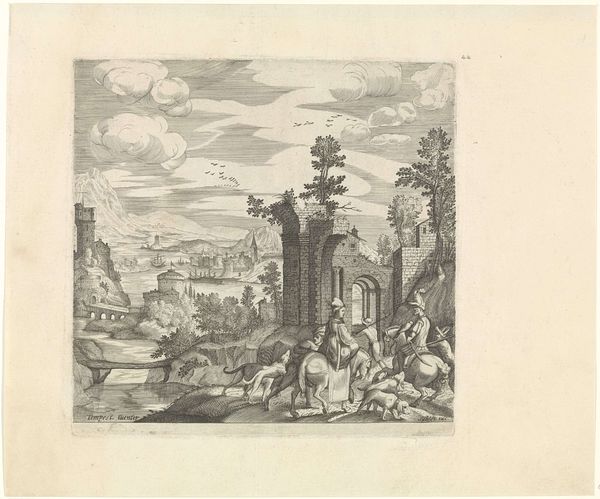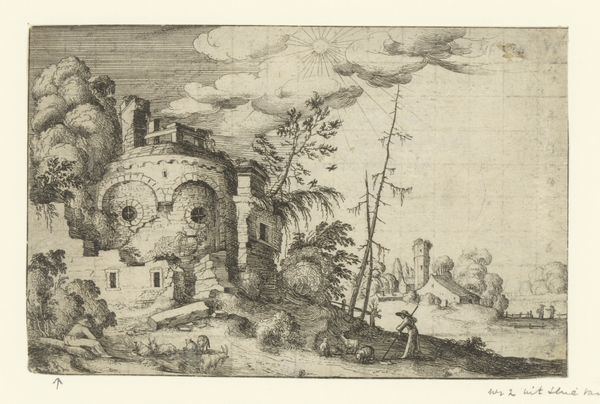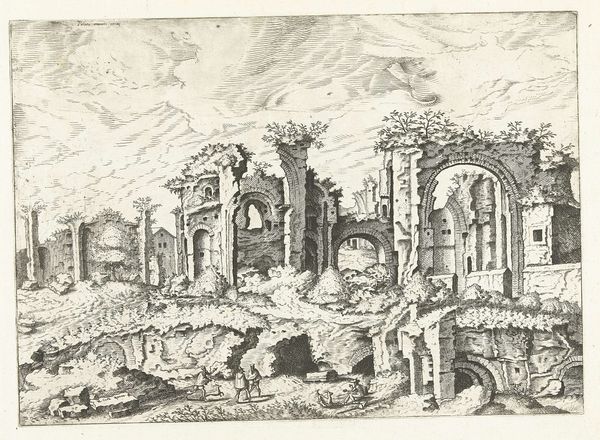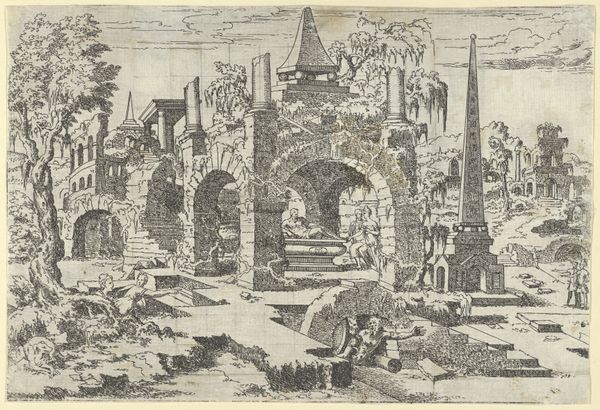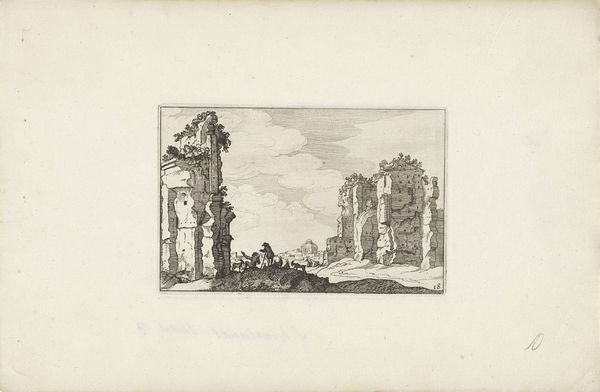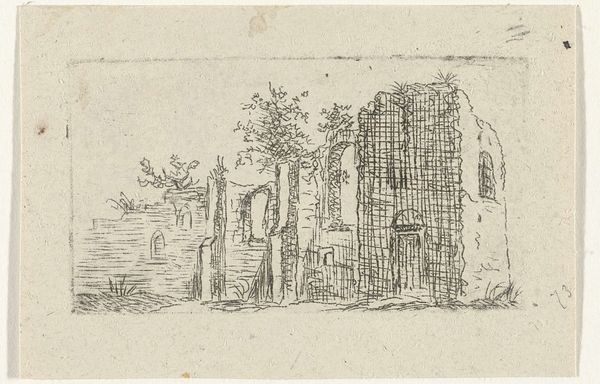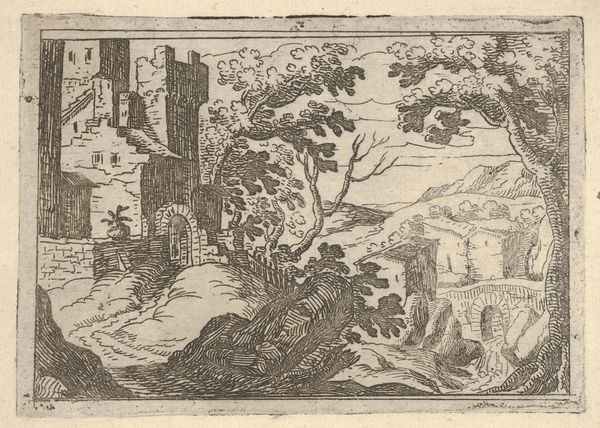
Gezicht op ruïnes, mogelijk de Thermen van Caracalla 1561
0:00
0:00
print, etching
# print
#
etching
#
landscape
#
mannerism
#
ancient-mediterranean
#
cityscape
#
history-painting
#
realism
Dimensions: height 230 mm, width 323 mm
Copyright: Rijks Museum: Open Domain
Curator: Here we have a 1561 etching by Johannes or Lucas van Doetechum, entitled "Gezicht op ruïnes, mogelijk de Thermen van Caracalla," which translates to "View of ruins, possibly the Baths of Caracalla." What is your first reaction to this work? Editor: Immediately, I'm struck by the overwhelming sense of decay and the stark contrast between the grandeur that once was and the ruin that remains. It's powerful. Curator: The Baths of Caracalla, built in ancient Rome, were a massive social and recreational center. This image encapsulates a particular moment in the 16th century, where classical antiquity was being rediscovered even as its physical remnants crumbled. Doetechum's print situates the viewer amidst this paradox. Editor: Absolutely, and the ruins become almost allegorical. It’s a meditation on power, legacy, and the inevitable passing of time, visualized through this architecture that was, at one point, the ultimate expression of Roman power. And also class. Curator: Yes, it raises compelling questions about how we engage with the legacies of past societies, and how power structures influence who is remembered, or rather, what remnants stay visible through time. The aqueduct system and the ruins tell more of Rome's social history as it was transformed into a modern world. Editor: It's also important to think about accessibility here. Ruins often invite looting, illegal artifact hunting. Who is being invited into this view? Does the artwork perpetuate these injustices or highlight the reality of their ruin, both physical and perhaps societal? The tiny figures scattered at the base emphasize the magnitude, yes, but they're anonymous, almost part of the landscape. What are their stories within this historical panorama? Curator: An interesting point to note here is the mannerist style – a slightly exaggerated drama, you might say. In this case it brings out that contrast between nature reclaiming the built environment and humankind going on after massive social shifts. Editor: A beautiful image. Even while acknowledging our uncertainties around Doetechum's position and viewership, the print undeniably holds its power because its subject has contemporary relevance. Its concern remains immediate, visceral even. Curator: Precisely. Its layered context leaves us much to ponder. Editor: Indeed. It speaks volumes about the continuing dialogue between art and life.
Comments
No comments
Be the first to comment and join the conversation on the ultimate creative platform.



